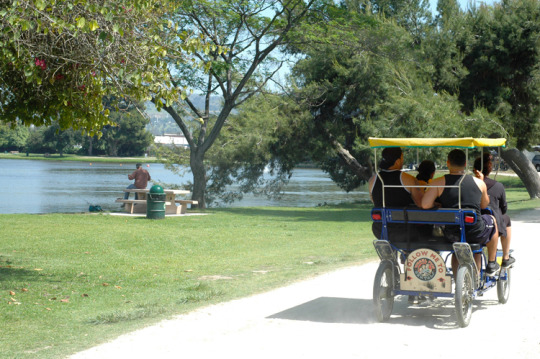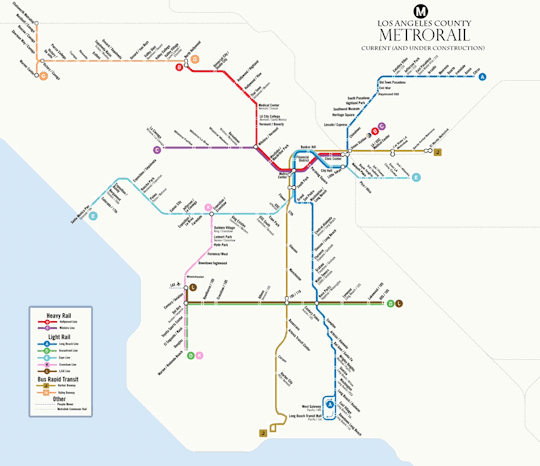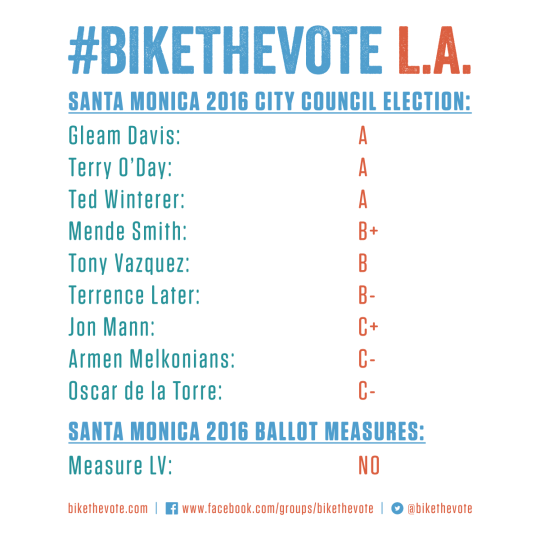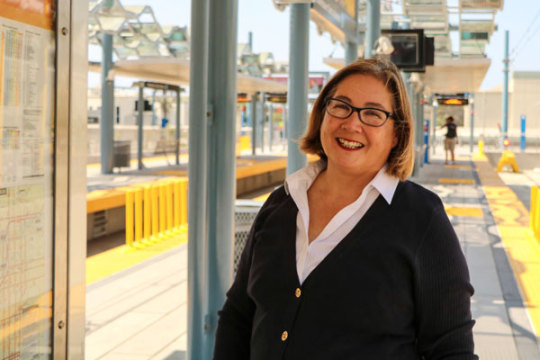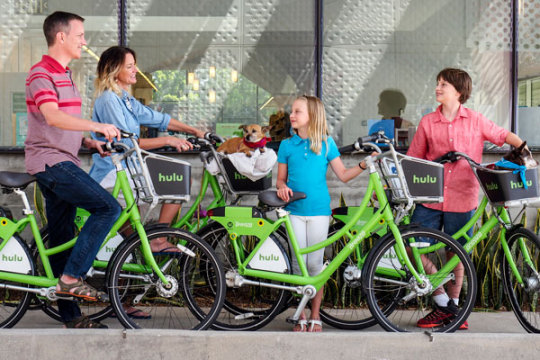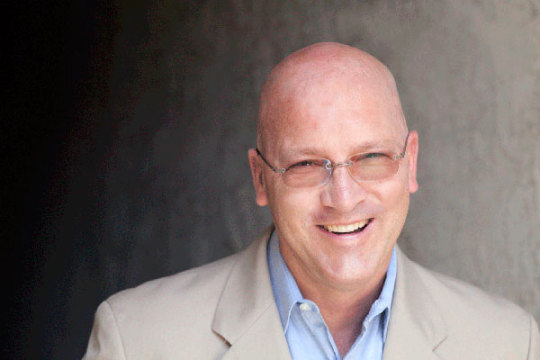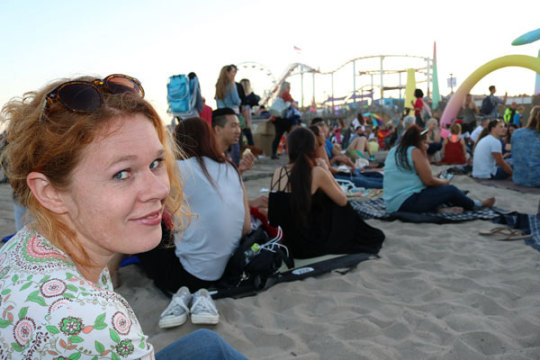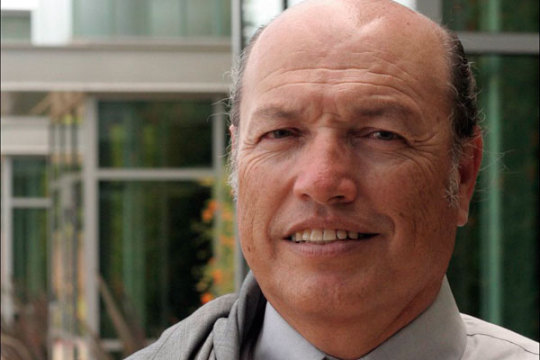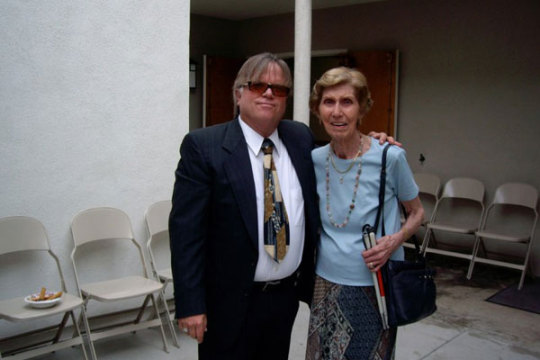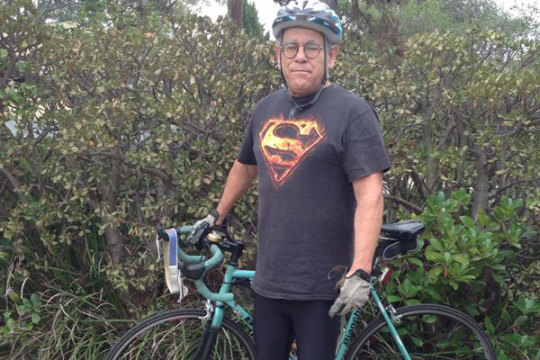Candidate campaign page: http://www.gleamdavis2016.com/
Councilmember Gleam Davis offers Santa Monica voters solid ideas and a proven track record of driving progress on mobility policy. Her responses to our questionnaire demonstrated deep knowledge of a broad range of topics, from bike share to parking to intersection design. Davis favors more ambitious work to complete the MANGo, including the notable addition of a traffic diverter to discourage cut-through car traffic. More broadly, she’d like the city to implement Dutch-style intersections to better protect cyclists from conflicts with cars. She supports expansion of the Breeze bike share system beyond the city limits and points to the need for more innovative features, such as adult tricycles, to serve the city’s senior population.
Davis championed removing Downtown parking minimums that force people who bike, walk, and take transit to subsidize the costs of vehicle parking. She also offered ideas for an impressively broad range of potential solutions to the first-mile/last-mile issue that go beyond bicycling to encompass walking and both fixed-route and on-demand transit. We could go on, but you really need to read Davis’ responses yourself to appreciate the obvious knowledge and consideration that’s gone into them. Gleam Davis is an experienced leader with a clear, compelling vision for the future of mobility in Santa Monica and the practical know-how to help make it a reality.
Bike The Vote L.A. 2016 Grade: A
(See below for full candidate questionnaire response)
1. What is your opinion on the state of the mobility options available in Santa Monica? Is the City doing enough to enable safe and convenient travel for those of your constituents who walk, bike, or take public transit?
I think that the City has made tremendous strides in making all transit and active transportation options more appealing. Breeze Bike Share and the recently reinvigorated Big Blue Bus routes have made real inroads into automobile usage around Santa Monica. Also, we are constantly improving our infrastructure. We have 2 protected cycle tracks (the Esplanade and near Santa Monica High School) and we recently installed scramble crosswalks in several downtown intersections. Of course, as we transition away from an automobile-centric society, we will need to do much more. The City has embraced the Vision Zero goal of improving pedestrian and cyclist safety and we need to continue to embrace walking and cycling infrastructure to make non-automobile methods of traveling as safe as possible. We also need to look at infrastructure innovations such as Dutch crosswalks (such as the one that is installed in Davis, CA) that will make cycling and walking safer.
2. With so many residents and workers riding bikes in the city, what additional efforts should Santa Monica undertake to improve safety and convenience of bicycling?
First, we need to look for more opportunities to construct protected or, at least, separated bikeways. There are many Santa Monicans committed to cycling but the real test is how do we get people who don’t ride bicycles to give cycling a try. As I speak with people around town, safety seems to be one of the primary concerns. If we could make it safer trough the use of dedicated and separated bikeways throughout town, I believe that we would increase ridership. In the meantime, programs like Kidical Mass are important because they teach children and their parents how to safely ride on our streets. Second, we need to make sure that we are enforcing traffic laws that protect cyclists and pedestrians. I am an advocate for getting more police out on the street enforcing laws that make automobile vs. cyclists accidents less likely. Finally. I think we need to realize that our older population do not see bikes as a real alternative. I think the City needs to do more outreach to this community to talk about options such as electric bikes, URB-E scooters, and adult tricycles as options. I believe that if we get more people out on bikes and other alternative forms of transportation, the better and safer it will be for all cyclists.
3. With the arrival of Expo light rail to Santa Monica, there has been much discussion about the best way to provide access for residents and visitors to the stations. How do you think first mile/last mile connections – the ability to walk, bike, or take take transit between one’s residence and the stations – can be improved?
First, I think we really need to change people’s mindset. In many cities such as Boston, New York, or Chicago, people think nothing of walking a mile to get to work or transit. In Santa Monica, people seem to be resistant to walking more than a quarter of a mile to anything. For most people, walking is the easiest, most convenient way to get to the nearest Expo or bus stop and so we need to encourage this most basic form of transportation. Second, we need to look for increased funding for Big Blue Bus operations so that we can add routes and increase frequency. If the bus comes more frequently and there are even more routes, bus service will become more convenient and thereby be a more attractive alternative. Finally, we need more innovative programs such as Blue@Night that gets folks to and from the 17th Street/SMC station on Friday and Saturday nights for $3 each way to and from any location in Santa Monica.
4. Santa Monica has championed multimodal transportation with initiatives like GoSaMo, policies like “no net new car trips” within the Land Use and Circulation Element of the General Plan, and comprehensive policy documents like the Bike and Pedestrian Action Plans. However, the city’s zoning requirements maintain high off-street parking requirements for new construction, even near high-quality transit. Researchers have repeatedly demonstrated that parking requirements encourage more people to drive. How can the city reconcile these contradictory positions? Will you champion reduced parking requirements or even parking maximums for new development projects?
Unfortunately, many people view abundant off-street parking as prerequisite for any project. (The Council once approved a housing project in downtown Santa Monica with NO parking but it could not get financing due to its lack of parking.) In the zoning code, while we maintain parking minimums, we give developers the option of doing an independent parking study to support a request for reduced parking requirements. We also have unbundled parking in projects so that people willing to forego an auto, are not paying for parking. I have championed reduced parking requirements. For example, in connection with the landmarked post office building at 5th and Arizona in downtown Santa Monica, I successfully removed the parking requirement of 23 deed-restricted, off-site spaces that the Planning Commission had imposed. I also have worked to try and create a central reservoir of shared parking in the downtown area so that we can remove all parking requirements from adaptive reuse and infill projects. I think as we move forward and more people reduce their vehicle miles traveled, it would be appropriate to consider reduced parking requirements or even parking maximums in areas well-served by transit.
5. The Michigan Avenue Neighborhood Greenway was one of the city’s first major multimodal routes, but it remains incomplete. Have you ridden or walked the Greenway? What still needs to be done, in your opinion, to make walking and bicycling on Michigan safer and more pleasant? Would you consider removing or relocating on-street parking in some places to create a protected cycletrack along the route?
I have walked the MANGO and I am very familiar with it. I think that the first thing we need to do is seriously study the possibility of placing a traffic diverter at the end of it. Unfortunately, on school mornings, MANGO becomes a automobile thoroughfare to Santa Monica High School. Without Safe Routes to School program, we are trying to convince families that there are much better alternatives (biking, Big Blue Bus) than driving to school. But as long as it is easy to go down Michigan, cross Lincoln, and pull right into the high school drop-off zone, Michigan Avenue, at least in the mornings, will be dominated by cars. By not allowing cars to travel across Lincoln, we can discourage much of that traffic. The idea of a protected cycle track is intriguing. As many of the buildings in the MANGO area are old and do not have parking for tenants, we would have to study the issue before removing parking. However, I think it would be a great place for our first lengthy protected bikeway.
6. Santa Monica launched L.A. County’s first public bike share system, Breeze, last November. Since then, it has seen steady growth and recently hit the milestone of having 30,000 active users. How can the system be improved? Would you be willing to commit to increasing the number of bikes in the system by 50 percent over the next year? And would you be willing to commit to increasing the number of hubs or relocating underperforming hubs to serve high-use areas of the city?
Breeze is a wonderful addition to our mobility options. I think the system can be improved by pushing hubs farther into the residential community to make them even easier for residents to use. I also think that we need to push for the vendor to create adult tricycles that can be used at the hubs so that folks who feel unsteady on a bicycle have an option. Finally, I think we need to continue to look for opportunities to place hubs outside of Santa Monica (e.g. Brentwood) to increase convenience and usage. If the usage figures justify it, I definitely would support increasing the number of bikes in the system in the next year and beyond to whatever level will make the system more usable and convenient. One of the great things about the Breeze system is that we can measure demand and identify places where we might need hubs as well as the most popular and underperforming hubs. We, of course, should use this data to increase the number of hubs where warranted, place larger hubs where they are needed, and relocate or shrink underperforming hubs.
